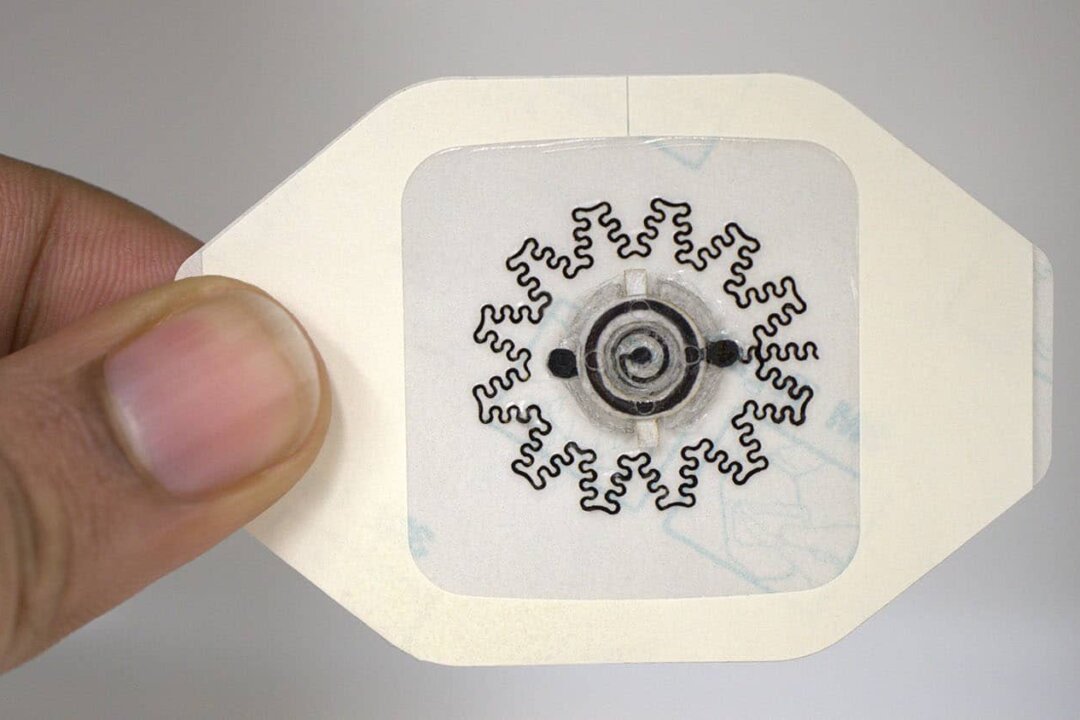Researchers have invented a bandage for chronic wounds that relies on electric stimulation. The bandage facilitates healing faster than conventional bandages, according to an animal study published Wednesday in Science Advances. “We also wanted to make sure that the technology is easy enough for people to use at home, rather than something that patients can only receive in clinical settings,” he said.
Chronic wounds are tissue injuries that do not heal normally or in a timely manner and do not restore function and anatomy after three months. The bandages are disposable and become activated by water. They have electrodes on the side that are in contact with the wound and a battery on the outside.

The battery produces an electric field lasting several hours to accelerate healing. “We found that the electrical stimulation from the device sped up the rate of wound closure, promoted new blood vessel formation, and reduced inflammation, all of which point to overall improved wound healing,” said Maggie Jakus, a co-first author and graduate student at Columbia University. “Chronic wounds affect ~2% of the U.
S. population and increase risks of amputation and mortality,” the authors wrote. “Unfortunately, treatments for such wounds are often expensive, complex, and only moderately effective.
” The bandage generates a voltage of around 1.5 volts and creates an electrical field “directed towards the wound center, consistent with the endogenous (body’s) electric field,” Kaveti said. “The strength and distribution of the electric field are influenced by the battery’s output voltage.
” Acute injuries disrupt the protection of the skin, our largest organ, which shields internal organs from harm, Kaveti said. “While most [injuries] heal in about two weeks, some become chronic due to systemic or local factors, delaying healing.” Kaveti said the bandage’s electric field “accelerates the migration of human keratinocyte cells,” skin cells responsible for restoring the epidermis from injuries.
Epidermal skin cells comprise about 90 percent of the skin’s outer layer. For Kaveti, the most fascinating element of the project was developing the bandage structure, which was inspired by kirigami, a three-dimensional form of origami, the Japanese art of folding paper. “This advanced version of wound dressing is capable of conformally mounting onto three-dimensional contoured soft tissue surfaces and accommodating large, out-of-plane deformations, and offers a unique solution for complex, deep, and irregularly shaped three-dimensional wounds,” said Kaveti.
“With costs soaring, effective wound healing is crucial,” he said. “Advances now focus on complex microenvironment therapies, moving beyond basic treatments to restore normal tissue function promptly.” The study authors said this unique electronics-free dressing leads to “rates of wound enclosure comparable to those with expensive biologics- or electronics-based approaches at a fraction of the cost.
” According to the study, if the bandages can be successfully manufactured, they would cost around $1. The researchers said the effectiveness of other products for treating complex chronic wounds is limited. Some products only heal a wound completely about half of the time.
Dr. Aristidis Veves, a professor of surgery at a Harvard teaching hospital and study co-author, said there is an urgent need for new therapeutic methods of healing chronic wounds because problems like diabetic foot ulcerations can lead to amputation of feet and legs. “My team is very lucky to participate in this project that investigates innovative and efficient new techniques that have the potential to revolutionize the management of diabetic foot ulcers,” Veves, who has worked on several research projects involving the healing of chronic wounds, said in the press release.
Bandodkar and Kaveti are listed as co-inventors of the water-powered bandage and filed a patent application related to their work on Nov. 30, 2023..



















